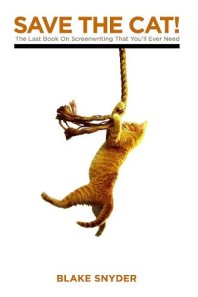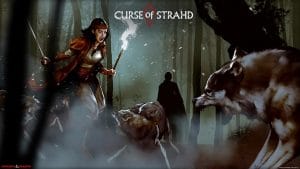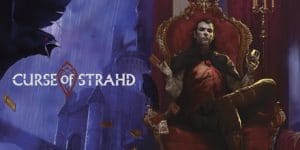In 2005, the late Blake Snyder wrote a book called Save the Cat! The book shared an organized way to break up movies into little chunks he called “beats” and was a runaway best seller, becoming far and away the most popular book on screenwriting. So let’s explore Snyder’s Beat Structure a little bit.
 He titled his book Save the Cat! after the movie Alien and the scene where Ripley saves a cat named Jones. This is the scene where the audience meets the hero of the movie for the first time and she does something nice (like saving a cat), which helps the audience like her and sympathize with her.
He titled his book Save the Cat! after the movie Alien and the scene where Ripley saves a cat named Jones. This is the scene where the audience meets the hero of the movie for the first time and she does something nice (like saving a cat), which helps the audience like her and sympathize with her.
Snyder argued that a simple scene like that helps the audience invest themselves in the character and the story, yet it is often lacking in many of today’s movies. Many movies miss simple “beats” like that one, in other words.
To illustrate this importance on structure in movies, he created a Beat Sheet that included the 15 essential “beats” or plot points that all stories should contain. His method expanded the 15 essential beats into 40 beats/scenes that could be laid out on a board, but let’s not get too into the weeds here.
Examples of the 15 essential beats are:
- The Opening Image, a visual that represents the struggle & tone of the story, introducing a quick look at the main character’s problem.
- The Catalyst, a moment where the “before” world is swept away and change is underway.
- The Debate, because change is scary and for a moment, the main character doubts the journey they must take.
- The B Story, which let’s be honest, is typically a love story.
- All is Lost, the moment that the main character realizes they’ve lost everything they gained, or everything they now have has no meaning.
- The Finale, the main character incorporates all that has gone before into their fight for the goal.

I don’t want to go too in depth on this; that’s what Snyder’s book is for. But if you really want to see how this fleshes out, check out this full Beat Sheet for Captain America: Winter Soldier, my pick for the best Marvel movie.
Now let’s shift to roleplaying games. Modern adventures have undoubtedly become more story-driven in their approach. Great adventure like Storm King’s Thunder and Out of the Abyss clearly have a structure to the storyline.
But the heroes of the story are the player’s characters and, as the events unfold, the narrative zigs and zags, often according to a random dice roll. Roleplaying games have certainly tried to adopt screenwriting techniques up to a point, but we also know there are drastic differences (i.e. different “beats” to hit). Here are a few of the “beats” in a RPG:
- Quest, which describes some sort of practical goal (often different than “motivation”). Ideally, this puts player characters in jeopardy.
- Exposition allows the events to come alive in the players’ “mind’s eye.” NPCs or read aloud text can accomplish this and unlike the Chris Clarmontian days of yesteryear, it is used sparingly nowadays.
- Hooks are beats that provide player characters with information that they will likely need later and helps drive them forward.
- Combat in RPGs is an important mechanism for resolving the plot points and to provide excitement in the game.
- Downbeats are mood-killing negative emotional moments that underscore just how crappy things are for the heroes. More on this in a moment.
- Huzzah! Alternatively, even Gary Gygax believed that players should see success more often than not! Gratifying beats allow the positive emotional moments that both lead to high fives and make the players look forward to the rest of the adventure with anticipation. More on this later.
- Reveals surprise us with new information like that fact that the shop keeper is secretly a lich!
 To go any further, we need to recognize the key ingredient, which is there are emotions evoked during each of these beats. In fact, it should be an emotional roller coaster, filled with highs and lows that keep the story interesting, yet ultimately ends with a satisfying resolution, just like a good movie. Many of the above beats (and others you may wish to add to the list) can be resolved on either a down note or an up note, often at the whims of a die roll.
To go any further, we need to recognize the key ingredient, which is there are emotions evoked during each of these beats. In fact, it should be an emotional roller coaster, filled with highs and lows that keep the story interesting, yet ultimately ends with a satisfying resolution, just like a good movie. Many of the above beats (and others you may wish to add to the list) can be resolved on either a down note or an up note, often at the whims of a die roll.
To hit the rights beats in a RPG isn’t only about plot events. A good RPG session has an ebb and flow to the game. Care should be taken in how it feels when it starts, and care should be taken in how it feels when it ends. Players should feel a sarlaac pit of dread in their stomach and they should also experience moments where they hoot and holler in triumph.
 To illustrate this, I invite you to experience the downbeat dread that is the current Curse of Strahd campaign that many of us Nerds on Earth writers are participating in.
To illustrate this, I invite you to experience the downbeat dread that is the current Curse of Strahd campaign that many of us Nerds on Earth writers are participating in.
- All the exposition associated with the setting of Strahd is ominous, depressing, and fully illustrates the hopelessness of the people there. It’s a consistent Down Beat.
- Every hook we’ve received has just took us toward more and more danger or confusion, and often involve very troubling things like the mistreatment of children. Down Beat.
- We did receive a series of quests from a fortune teller, but we unfortunately haven’t been able capture any momentum toward fulfilling them. Still, it’s a potential Up Beat.
- Our big reveal thus far was that we aren’t ready for Strahd. It was a demoralizing Down Beat to face him early.
- Speaking of that combat, we’ve had just a few the last couple of sessions. The two large ones were both two hour combats where we got our butts handed to us. Both were demoralizing Down Beats.
Quickly scan through the above beats and it’s easy to see how our current campaign isn’t an emotional roller coaster right now, it’s a depressing descent toward wanting to cry real tears. After so many beats ending on a down note, us players are desperate for any kind of win or any sort of that will instill us with a little hope that we can climb up out of the pits.
We’ve just scratched the surface here, so if you have any interest, I do suggest you check out Save the Cat! It’s an interesting and engaging book that will help train your mind to spot how the structure and sequence of stories can be broken down into little “beats” that add up to a satisfying whole. It can also help put words and structure to the fact that our emotions are deeply integral into how we process stories.

